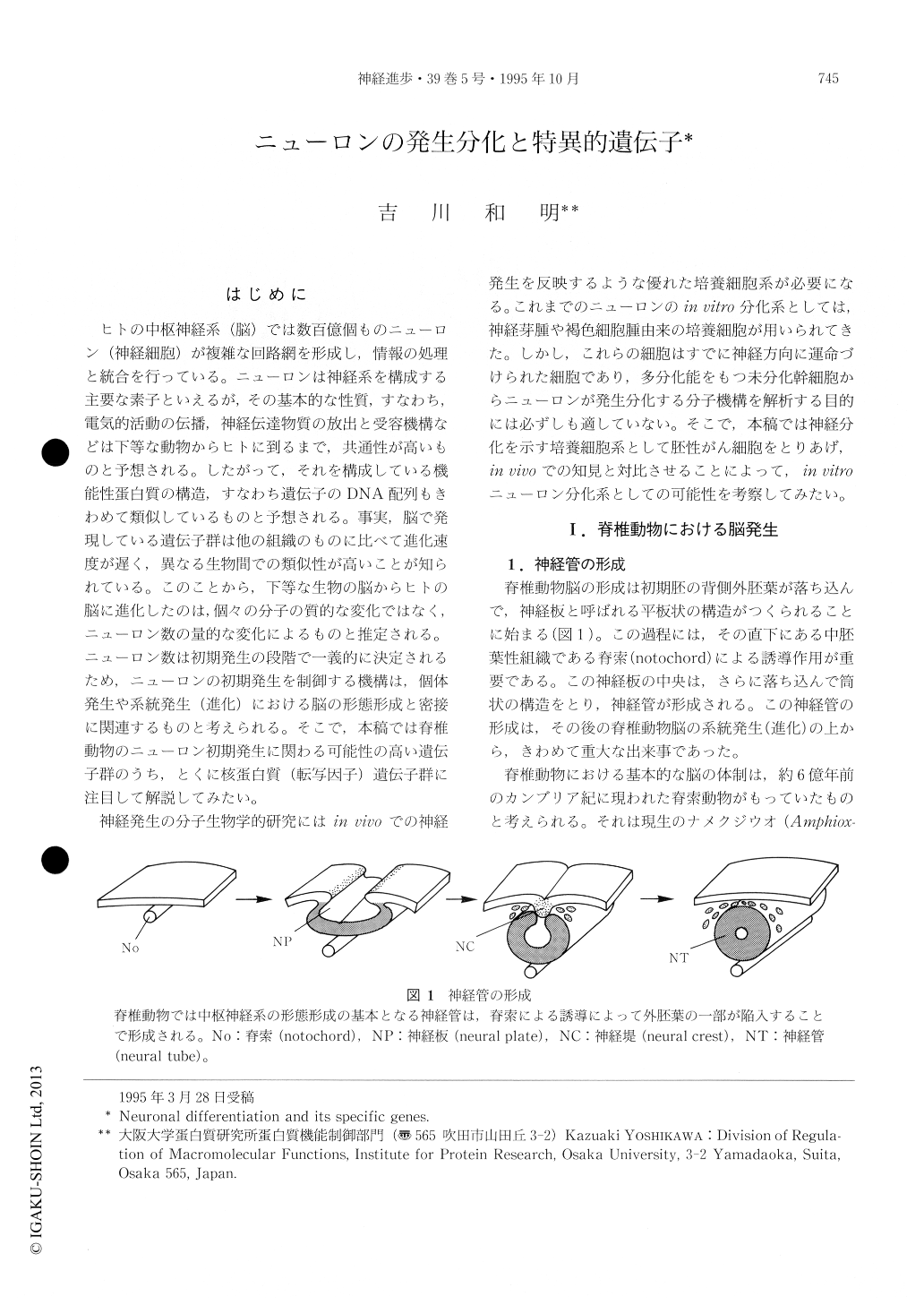Japanese
English
- 有料閲覧
- Abstract 文献概要
- 1ページ目 Look Inside
はじめに
ヒトの中枢神経系(脳)では数百億個ものニューロン(神経細胞)が複雑な回路網を形成し,情報の処理と統合を行っている。ニューロンは神経系を構成する主要な素子といえるが,その基本的な性質,すなわち、電気的活動の伝播,神経伝達物質の放出と受容機構などは下等な動物からヒトに到るまで,共通性が高いものと予想される。したがって,それを構成している機能性蛋白質の構造,すなわち遺伝子のDNA配列もきわめて類似しているものと予想される。事実,脳で発現している遺伝子群は他の組織のものに比べて進化速度が遅く,異なる生物間での類似性が高いことが知られている。このことから,下等な生物の脳からヒトの脳に進化したのは,個々の分子の質的な変化ではなく,ニューロン数の量的な変化によるものと推定される。ニューロン数は初期発生の段階で一義的に決定されるため,ニューロンの初期発生を制御する機構は,個体発生や系統発生(進化)における脳の形態形成と密接に関連するものと考えられる。そこで,本稿では脊椎動物のニューロン初期発生に関わる可能性の高い遺伝子群のうち,とくに核蛋白質(転写因子)遺伝子群に注目して解説してみたい。
Neurons in the vertebrate brain are generated from their precursor cells, the neuroepithelial stem cells, which are the sole cell species in the neural tube at the early stages of development. The stem cells withdraw permanently from the cell cycle immediately after they differentiate into neurons. Therefore, neurons are post-mitotic cells which never re-enter the cell cycle throughout their lives. The number of neurons in the brain are primarily determined during the period of neuronal differentiation, and the growth rate of each brain area is dependent on the duration of neuron production.

Copyright © 1995, Igaku-Shoin Ltd. All rights reserved.


